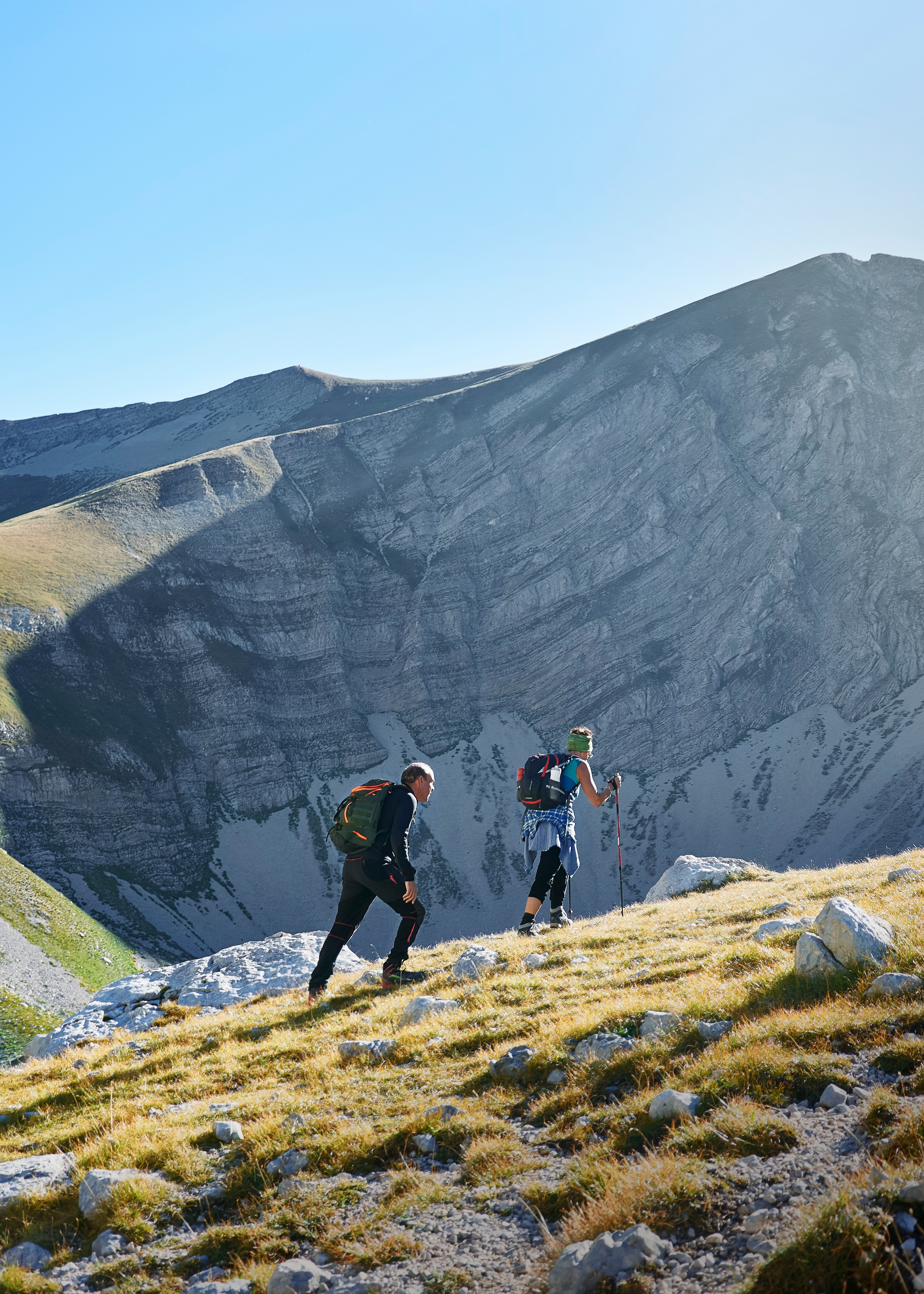What Is Rucking? The Complete Beginner's Guide
· 8 min read · rory@getrucky.com
rucking beginner fitness

Rucking is simply walking with weight. Think of it as "dad cardio" with a backpack—born in the military, perfect for busy adults. It's low-impact, sneaky-effective, and builds endurance and strength without the knee-bashing of running. I sometimes start a bit too hot (classic), then tighten the straps, fix my pace, and let the data do its thing.
The Science: In a 6.4 km real‑world field trial with varied gradients, adding a balanced torso load (~30% body mass) increased oxygen uptake by about 35% vs unloaded walking[1]. Validated USARIEM equations now accurately predict the extra metabolic cost for backpacks[2] and weighted vests[3]. Rucking is generally lower impact than running, but impact loads still rise with load and fatigue—fit and technique matter[4].
Benefits of Rucking
- Higher energy burn than walking: Field data show ~35% higher oxygen cost with a ~30% bodyweight torso load vs unloaded walking on a varied 6.4 km course[1].
- Builds strength and posture: The load encourages posterior-chain engagement and a tall, brisk gait. Pair rucks with simple strength work for best results.
- Time-efficient: Adding modest load increases training stimulus without extending workout time. Use validated models and our calculator to calibrate.
- Mood and outdoors time: Walking outside with a purpose is hard to beat. Many people report better focus and mood on ruck days.
- Bone health note: Weight-bearing activity supports bone, but in a 12‑month RCT during intentional weight loss in older adults with obesity, neither weighted vests nor resistance training prevented hip bone loss; resistance training improved strength and the vest increased a bone‑formation marker[5].
How to Start Rucking
- Choose a pack: Any sturdy backpack works to start. Dedicated ruck packs are more comfortable for heavier loads.
- Start light: 5–10% of bodyweight for beginners. Focus on form before adding weight.
- Pick safe terrain: Flat paths first, then add hills or trails as you adapt.
- Walk tall: Neutral spine, shoulders back, core engaged. Shorter, quick steps.
Technique Tips
- Load placement: Carry the weight high and close to your back to reduce torque and sway.
- Strap tension: Adjust straps so the load moves with you, not against you—bounce is wasted energy.
- Hip belt usage: On longer outings, a hip belt can shift some load to the pelvis; don’t let it pull the pack low.
- Progressive overload: Increase only one variable per week (distance, weight, or pace) to minimize overuse risk.
- Cadence: Short, quick steps often feel easier under load than long strides.
Gear Basics
- Backpack: Padded straps and frame sheet help a lot.
- Weight: Ruck plates, dumbbells, sandbags, or water jugs.
- Shoes: Supportive walking/hiking shoes. Trail shoes for off-road.
- Socks: Wool or synthetic to minimize blisters.
Beginner Plan (2–3x/week)
- Week 1–2: 30–40 min, light weight, easy pace
- Week 3–4: 40–50 min, same weight, varied terrain
- Week 5–6: Keep time, add a small weight increase
Safety and Recovery
- Pain vs fatigue: Most load‑carriage injuries are overuse‑related[6]. Sharp pain = stop and assess.
- Mobility work: Post‑ruck calf, hip flexor, and IT band stretches can help keep tissues happy.
- Strength training: Glute and core work supports the back and hips under load.
- Hydration: Load, heat, and hills increase fluid needs—sip regularly and pre‑hydrate.
- Recovery: Leave 24–48 hours between heavy rucks; alternate easy and hard days.
References
- Weyand, P.G. et al. (2021). Real‑world walking economy on a 6.4 km course. J Appl Physiol. Open access.
- Looney, D.P. et al. (2022). Modeling the Metabolic Costs of Heavy Military Backpacking. Med Sci Sports Exerc. Open access.
- Looney, D.P. et al. (2024). Metabolic Costs of Walking with Weighted Vests. Med Sci Sports Exerc. PubMed.
- ROTC cadet ruck marching study (2020). Lower‑extremity loading increases with ruck marching. PubMed.
- Beavers, K.M. et al. (2025). Weighted Vest Use or Resistance Exercise to Offset Weight Loss–Associated Bone Loss. JAMA Netw Open. Full text.
- Knapik, J.J. et al. (2019). Load carriage injury mechanisms, risk factors, and prevention. J Strength Cond Res.
- Attwells, R.L. et al. (2006). Influence of carrying heavy loads on posture, movements and gait. Ergonomics.
- USARIEM review of physiological impact of load carriage (2022). Open access.
- Complex Terrain Load Carriage Energy Expenditure (2018). MSSE.
Additional perspectives
- Zone 2 training (context): Peter Attia’s guide to Zone 2 and why it matters for mitochondrial health and aerobic capacity. Useful companion to rucking on easy days. Read the guide.
- Popular commentary: Gary Brecka on weighted vests and walking—motivational perspective, not peer‑reviewed research. Watch on YouTube.
Rucking Calorie Calculator
Want to estimate calories burned rucking? Try our free rucking calorie calculator (aka ruck calorie calculator or calories burned rucking calculator): Open the Rucking Calorie Calculator. Adjust body weight, pack weight, pace, grade, and terrain.
Is rucking good for weight loss?
How fast should I ruck to burn fat?
Related Guides
- How Much Weight Should You Ruck With? - Science-based load recommendations
- Rucking Calories Burned - Metabolic data and calculation methods
- Rucking vs Running - Comparative analysis with research data
- Rucking Calorie Calculator - Calculate your burn using validated formulas
Enjoyed this guide? Download the app to track your rucks, calories, and progress: iOS · Android